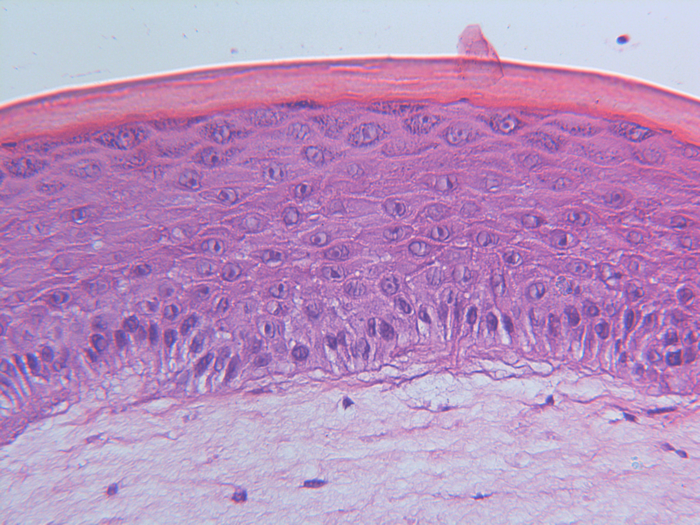Artificial human skin developed by researchers at the University of Copenhagen, Denmark managed to provide insight function of cancer cells and has stopped their invasive expansion affecting the consecutive cells around them, a press release said.
Image Credit: Eurekalert
As the basic units of the body, cells perform vital functions. However, there is a fixed range and growth pattern that they follow. It is called contact inhibition which maintains the growth of cells and inhibits over-expansion. They do not invade the hypodermis (the bottom layer of the skin that connects the dermis layer to skin, bones, and muscles) of the cell. Instead, they produce a new layer of skin.
On the other hand, cancer cells do not display contact inhibition and hence do not respect any boundary. They grow indefinitely. It is called invasive growth. Scientific studies have shown the cause for such behavior to be the TGF beta pathway.
What Is TGF beta Pathway?
Transforming growth factor-β (TGF-β) is a ubiquitous cytokinin (present almost everywhere) secreted by cells. Cytokinin is responsible for the immune responses of the human body. Every cell can secrete and react to TGF-β with the receptors on its surface. The function of TGF-β can be protagonistic or antagonistic, depending on the stage of cancer (early or late).
Professor Hans Wandall from the Department of Cellular and Molecular Medicine at the University of Copenhagen said that he and his colleagues have been studying the mechanism of the pathway and blocking the invasive growth of cancer cells.
The pathway has a role in maintaining inter-cellular communication and controls vital functions like cell growth and cell division. He said the improper functioning of the TGF-β mechanism turns a normal cell into a tumor cell that invades and interrupts the surrounding cell’s functioning.
Sally Dabelsteen, associate professor at the School of Dentistry worked with Professor Hans Wandall and researched the effect of common drugs on the artificial model.
Image Credit: Wikimedia
Artificial Skin Model Replacing Mice Model.
Artificial skin is the closest to natural human skin. Artificial skin used in the research is developed by manipulating natural skin cells (Bioengineered artificial skin). It is a reliable model for researchers to test cosmetics, drugs, and study skin cancer with other skin disorders. Artificial skin cells were grown on collagen-made subcutaneous tissues, making them grow in layer form, just like natural human skin.
Artificial skin models also help researchers carry out genetic manipulation studies that are otherwise not possible in human subjects. This can provide insight into skin development systems and renewal. Unlike the primitive mice model, the skin model is more efficient in cancer studies. In this study, researchers were able to reproduce the skin and follow the developmental pattern of other skin disorders with skin cancer.
“By using artificial human skin we are past the potentially problematic obstacle of whether results from tests on mice models can be transferred to human tissue. Previously, we used mice models in most studies of this kind. Instead, we can now conclude that these substances probably are not harmful and could work in practice because the artificial skin means that we are closer to human reality,” said Wandall.
Since the ban on animal testing, the European Union is using artificial skin for testing cosmetics. Such a model helps determine the pros and cons of the experiment directly on skin. He said that they reaped the experience concerning how molecules work and aim to specify whether they damage the structure of the skin and the healthy skin cells.
The research was published in the journal Science Signaling
Follow us on Medium!





1 comment
[…] and mutinous forms, has proven to be a very challenging disease to cure. This is partly because cancer cells are often times difficult to target amongst healthy cells, and partly because they can mutate and […]